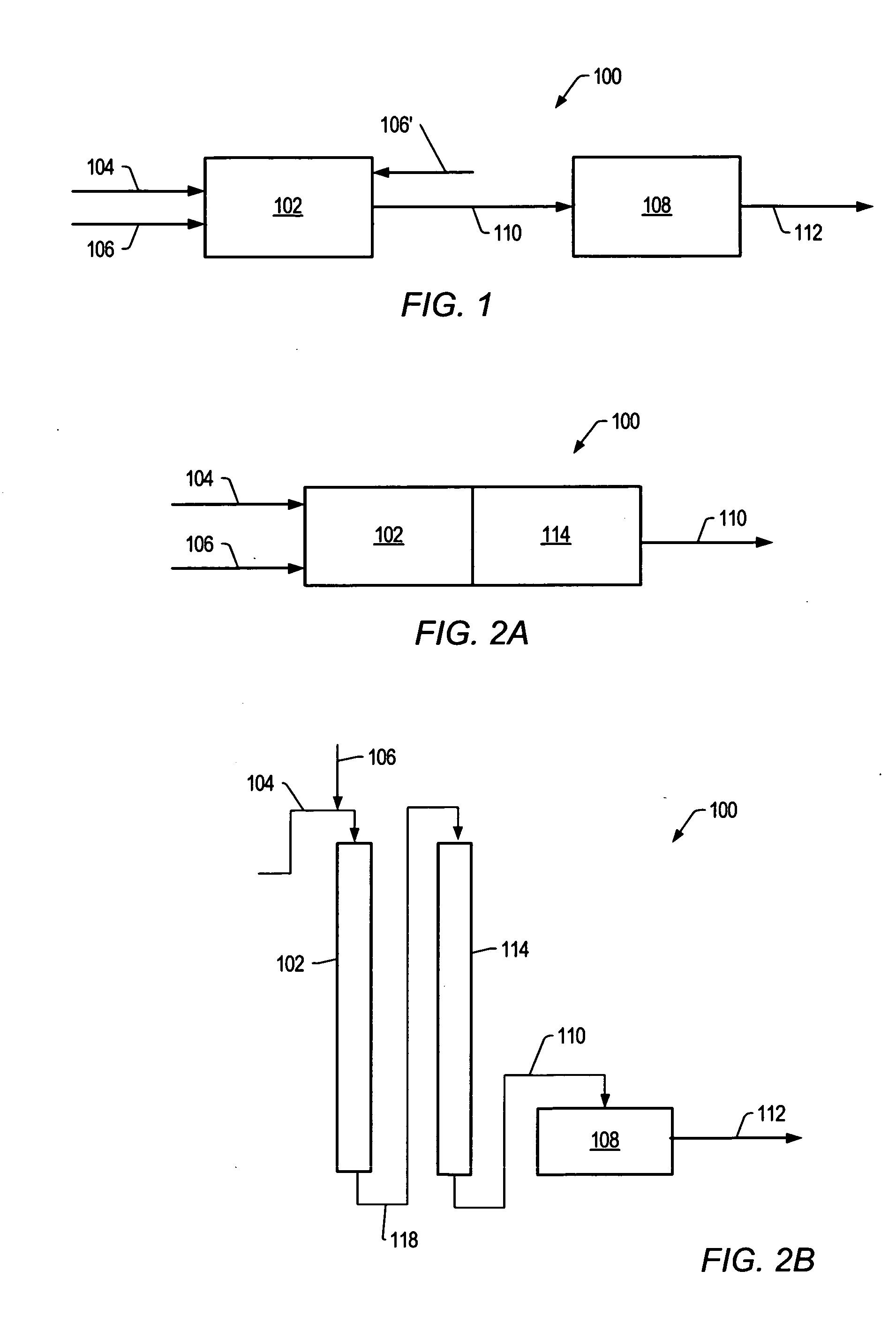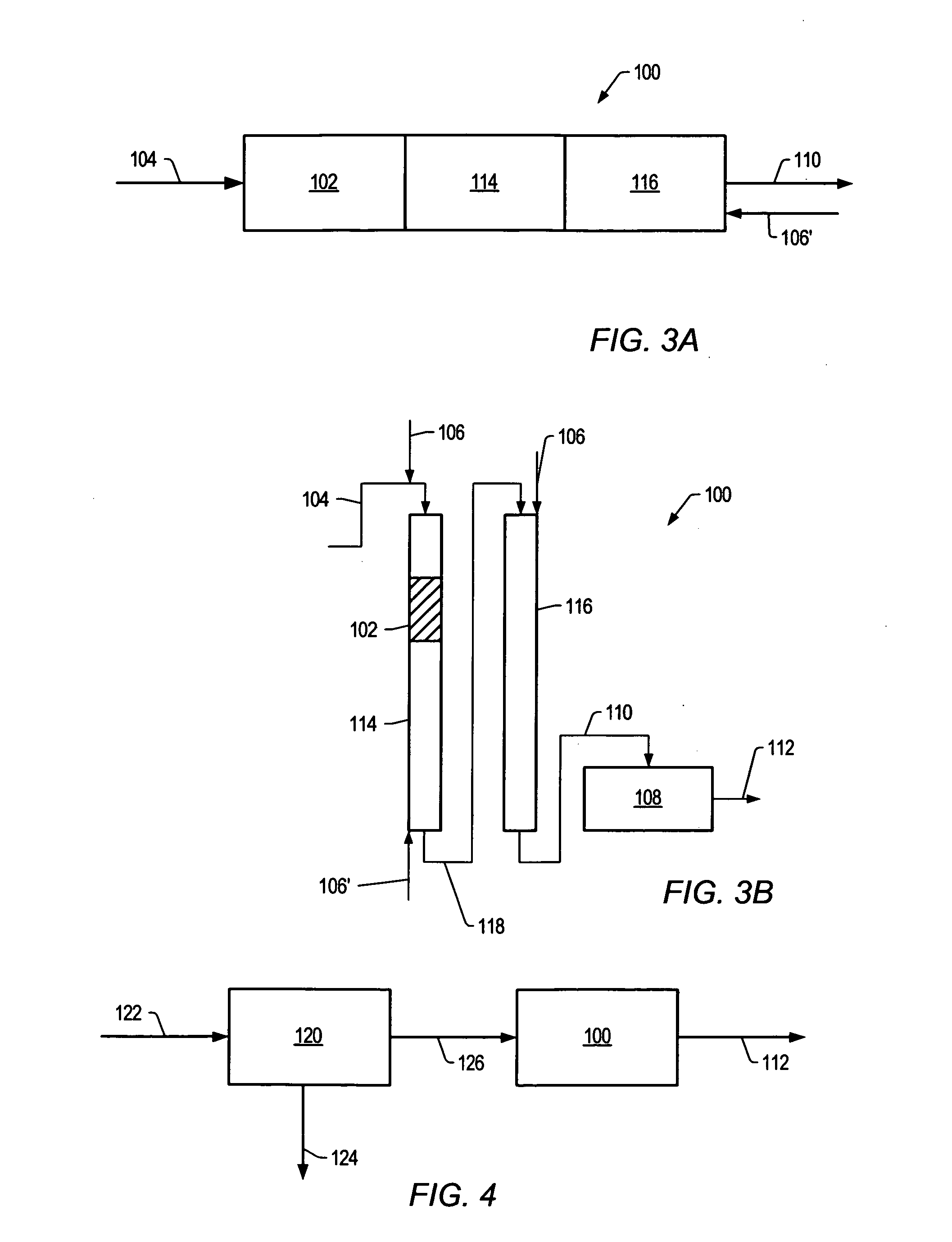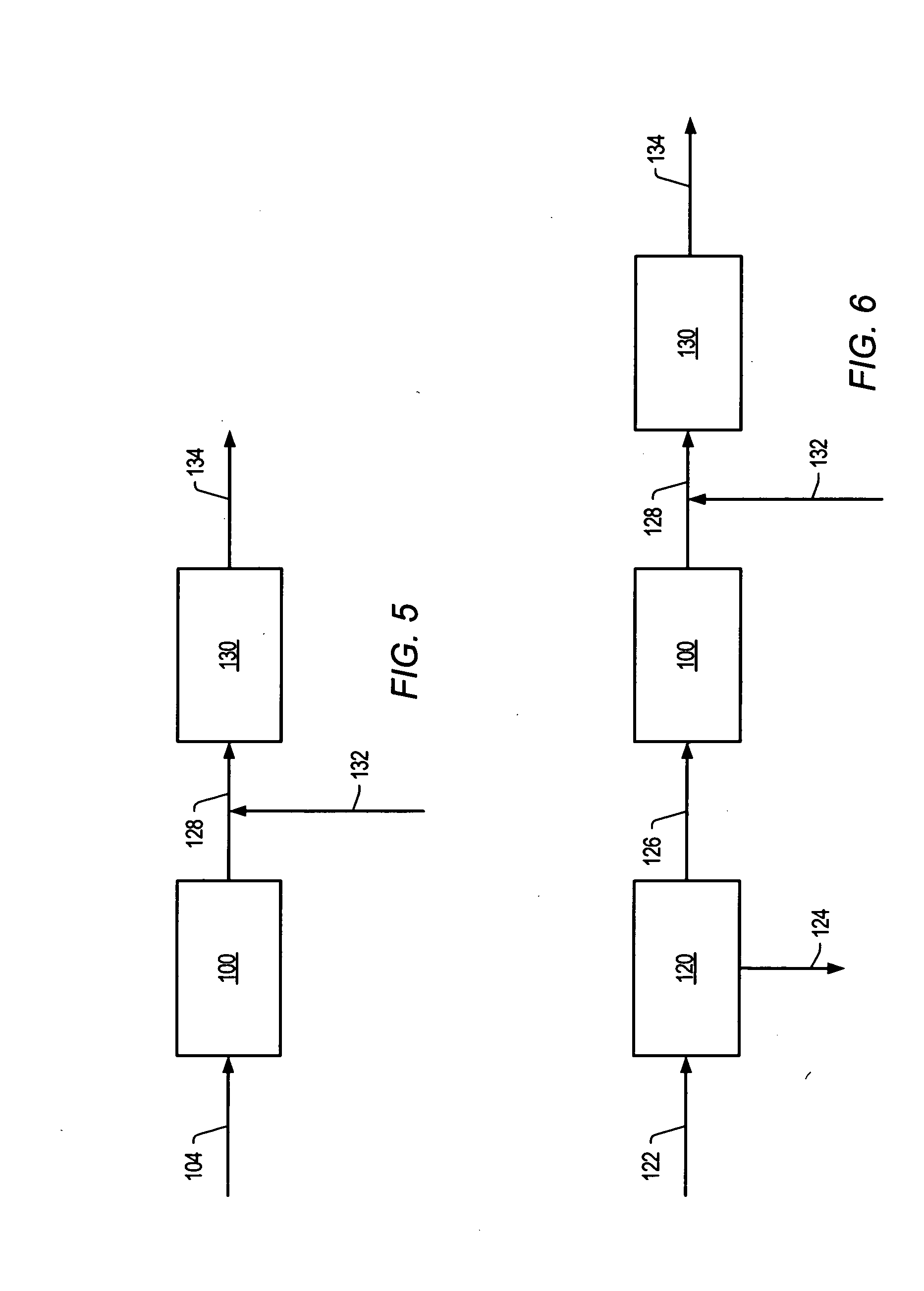Systems, methods, and catalysts for producing a crude product
- Summary
- Abstract
- Description
- Claims
- Application Information
AI Technical Summary
Benefits of technology
Problems solved by technology
Method used
Image
Examples
example 1
Preparation of an Uncalcined Catalyst Precursor
[0219] An uncalcined catalyst useful as a Column 6 metal catalyst precursor for forming a Column 6 metal catalyst upon heating to a temperature below 500° C. in the presence of one or more sulfur containing compounds was prepared as follows. An alumina support having a pore volume of 0.83 cm3 / g was impregnated with a molybdenum / nickel / phosphorus impregnation solution prepared as follows. MoO3 (35.14 grams) was combined with NiO (5.53 grams), H3PO4 (9.15 grams, 85 wt % H3PO4), and deionized water (83 grams), and heated to 93.3° C. (200° F.) for several hours, and then reduced in volume to 166 mL to produce the molybdenum / nickel / phosphorus impregnation solution. The impregnation solution had a pH of 1.52.
[0220] The alumina support (200 grams) was combined with the impregnation solution and aged for several hours with occasional agitation. The resulting support / metal mixture was heat-treated at 100° C. for several hours until loss on ign...
example 2
Contact of a Crude with an Uncalcined Catalyst
[0221] A tubular reactor with a centrally positioned thermowell was equipped with thermocouples to measure temperatures throughout a catalyst bed. The catalyst bed was formed by filling the space between the thermowell and an inner wall of the reactor with catalysts and silicon carbide (20-grid, Stanford Materials; Aliso Viejo, Calif.). Such silicon carbide is believed to have low, if any, catalytic properties under the process conditions described herein. All catalysts were mixed with silicon carbide in a volume ratio of 2 parts silicon carbide to 1 part catalyst before placing the mixture into the contacting zone portions of the reactor.
[0222] The crude feed flow was from the top of the reactor to the bottom of the reactor. Silicon carbide was positioned at the bottom of the reactor to serve as a bottom support. An uncalcined molybdenum / nickel catalyst precursor prepared as described in Example 1 was mixed with silicon carbide and th...
PUM
| Property | Measurement | Unit |
|---|---|---|
| Temperature | aaaaa | aaaaa |
| Temperature | aaaaa | aaaaa |
| Temperature | aaaaa | aaaaa |
Abstract
Description
Claims
Application Information
 Login to View More
Login to View More - R&D
- Intellectual Property
- Life Sciences
- Materials
- Tech Scout
- Unparalleled Data Quality
- Higher Quality Content
- 60% Fewer Hallucinations
Browse by: Latest US Patents, China's latest patents, Technical Efficacy Thesaurus, Application Domain, Technology Topic, Popular Technical Reports.
© 2025 PatSnap. All rights reserved.Legal|Privacy policy|Modern Slavery Act Transparency Statement|Sitemap|About US| Contact US: help@patsnap.com



